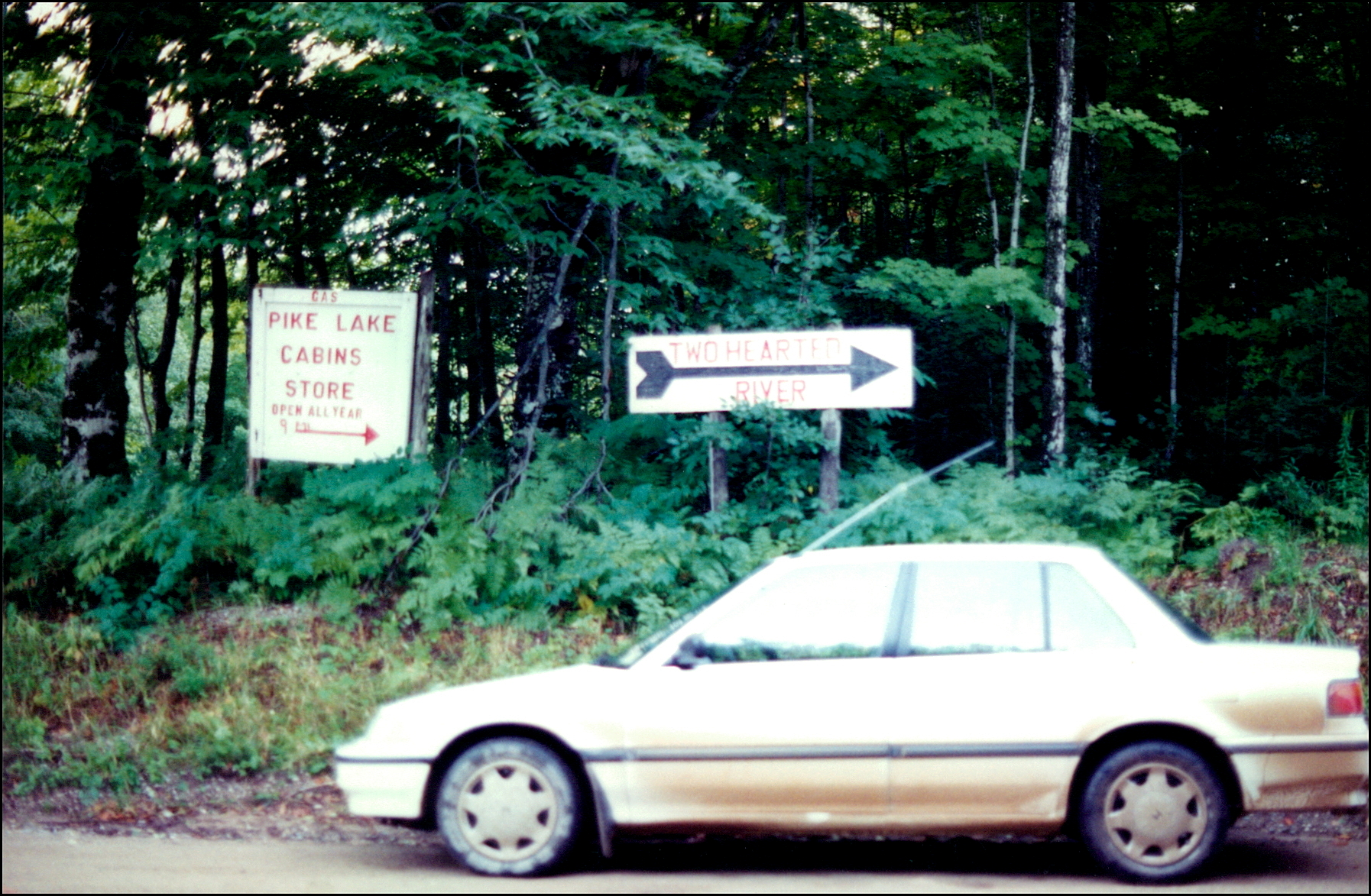
When I went searching for Hemingway’s fabled Two-Hearted River in 1994, there was only one paved road in all of Luce County, Michigan. My poor little Honda bounced along rutted dirt at 15 mph, with huge pickups blazing past, their drivers wondering what the hell a little white sedan was doing up in that country.
The quest ended unceremoniously when the “road” I was on narrowed to maybe eight feet, eking slowly through a dense pine forest and finally, as the car began plowing through sand so deep it approached my front bumper, I reluctantly reversed course and made my way back out of the wilderness, stopping to snap that picture before the sun set.
The Big Two-Hearted River was made legendary by the Hemingway short story of the same name. It is, in some ways, the greatest fishing story ever told, meticulously documenting every detail of the protagonist’s day, from the preparation of camp to the slicing of onions to the baiting of hooks.
At the same time, it’s not really about fishing at all. It’s actually the story of a man traumatized by war, desperately seeking control of his mental state by focusing his every thought and action on the simple, precise rituals of fishing. The war is never mentioned, only vaguely alluded to.
Hemingway described the style as the “iceberg theory:”
If a writer of prose knows enough of what he is writing about he may omit things that he knows and the reader, if the writer is writing truly enough, will have a feeling of those things as strongly as though the writer had stated them. The dignity of movement of an ice-berg is due to only one-eighth of it being above water.
I’m not sure how much of that I understood when I read the story back in high school and college, but it’s much clearer now, as I’ve had the chance and the motivation to go back and re-read this old “fishing story.”
And it just reinforces in me the notion that big ideas don’t have to be writ so large — in literature, in TV and film, and even in business. That words are often the least effective way to get your point across. And that we can put faith in the intelligence of the viewer, listener or reader to understand.
————
